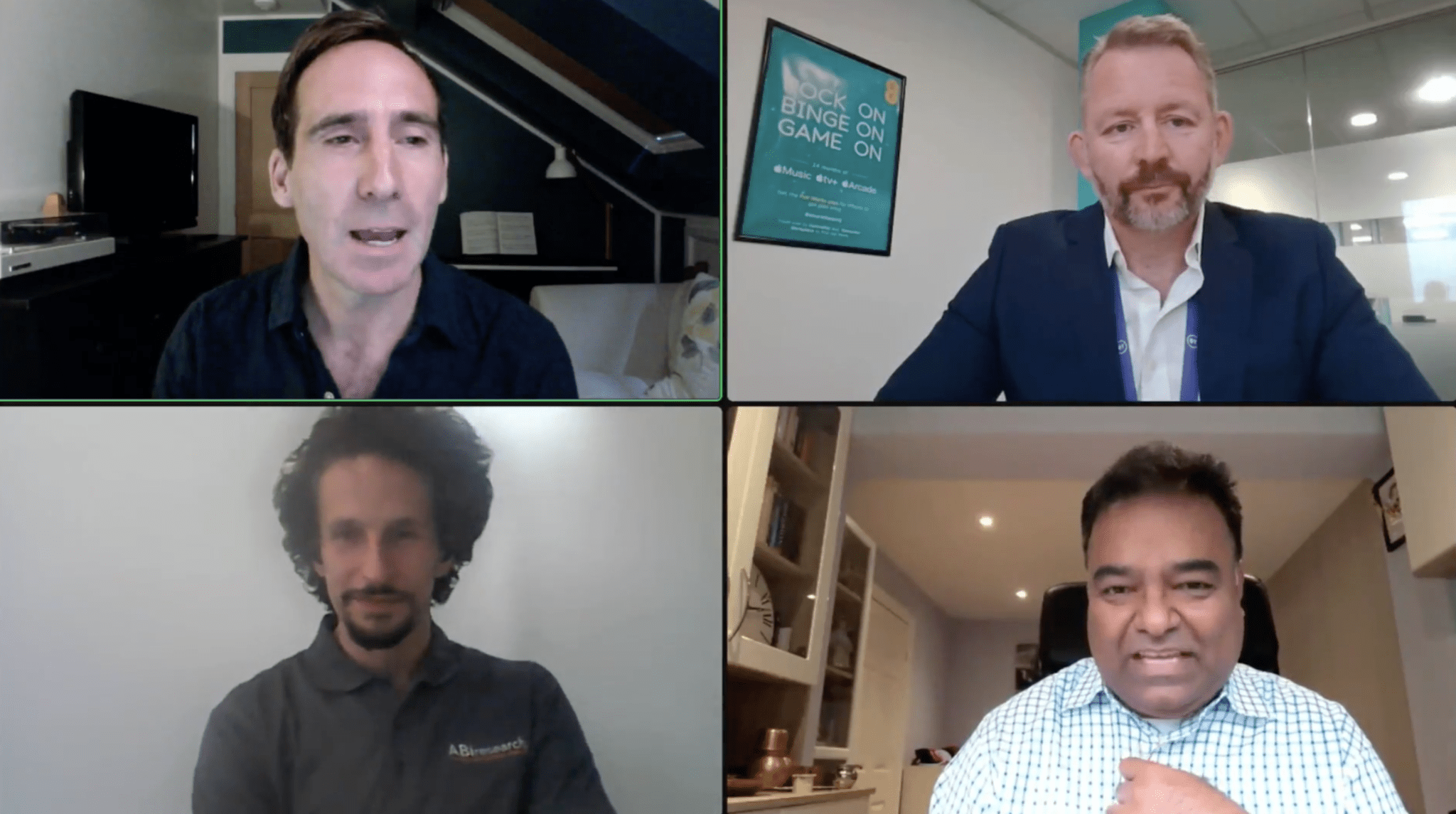A panel session at Private Networks European Forum last month put the spotlight on the discipline of network and system management, specifically, where traditional mobile operators are increasingly facing-off with rival factions in the developing Industry 4.0 supplier market. These other groups include system integrators, cloud providers, and industrial specialists, plus sometimes network equipment vendors, as well.
The session billed this standoff as a ‘battle royale’ for the hearts and minds of the new industrial economy, and asked a panel, which included speakers from telecoms provider BT and system integrator Tech Mahindra, about how roles and responsibilities will be divided up, and which side, ultimately, will win. Invariably, the answer to the last question was hardly conclusive – if it was ever given. But plenty of other talking points arose.
This article – in two parts; find the first instalment here (entries 1-to-3 are listed below) – attempts to summarise and order the bigger points from the session, as anecdotal conclusions about the state of the private LTE and 5G market today. The panellists on the session were Lou Walker, technology lead for mobile private networks at BT, Bhushan Patil, chief growth officer for networks (EMEA + APJI) for Tech Mahindra, and Leo Gergs, senior analyst at ABI Research. .
Note, all sessions from Private Networks European Forum are available on-demand here.
1 | TELCOS EXPECT (EVERYONE EXPECTS) TO ‘PRIME’ – see here
2 | THIS IS NOT A TELCO STORY (FIRST RULE OF 5G CLUB) – see here
3 | TOUGH REALITY CHECKS (SAME SH*T, DIFFERENT WAY) – see here

4 | MISSION CRITICAL VS MISSION POSSIBLE (MASSIVE IOT)
This question – about the winners in the race to roll out private networks – should be considered in context of different enterprises, too, of course; not just with regards to their domain, but in terms of their size, as well. Because, as it stands, most of the action – and therefore most of the discussion – is about who owns the private 5G supply into Industry 4.0 PLC, when much of the battle will be about who supplies privately-held (often family-run) SMEs.
This question came up in the PNEF session, about how the broader industrial market might also be carved-up horizontally between various parties on the supply-side, according to the size (and the wealth) of enterprises on the demand-side. Logic says mass-market private 5G solutions, which are less bespoke and more transactional, will be sold off-the-shelf to SMEs in cloud app stores by hyperscalers, like any other edge/cloud service.
While the rest of the supplier market continues to wrangle over the telco complexity and domain knowhow of mission-critical networking for mega corporations engaged in hard-nosed industrial pursuits. “It is hard to rationalise… Different verticals and opportunities… are vast and varied,” reasons Lou Walker, tech lead for mobile private networks at BT, speaking on the PNEF panel session. “There is a place for [everyone],” he said.
But he adds: “In terms of hyperscalers… we have seen AWS launch in the US with a fairly basic private networks solution, clearly aimed at a mass-market… SME base. Whether that type of solution fits with the more complex, demanding [mission critical] requirements for private networks, particularly in manufacturing and logistics [remains to be seen] – which is the other end of the scale, and where BT or a well established SI could play.”
Bhushan Patil, chief growth officer for networks at Tech Mahindra, agrees: “It is not that clear [but] that is the direction companies like AWS focus on – template-ising [solutions] and [opening up the] mass market. [But] the ability for SMEs to leverage 5G has a way to go… It depends on how simple the use cases are [and the] backend connectivity is. I don’t see [many big] use cases in that space. But sure, if they can crack that, then that is where it will go.”
Instead, he says, the “trick and opportunity” for serious-minded MNOs and SIs, plus some others, is to go big-game hunting, to rationalise private 5G for complex industry. The market will multiply, he implies, when they devise architectural blueprints for private 5G, as a function of Industry 4.0, to scale across entire footprints and domains, without starting from scratch each time. “That is where big operators and system integrators will focus, first,” he says.
Walker rejoins: “That is the number one thing, right; to deliver a solution that offers the [right] performance, and supports different use cases over time. The market [has] started with lots of proofs, for only one or two use cases. [But] companies will feel their way onto this, and 5G will support their entire transformation – which, in manufacturing, say, is a 10-year cycle, typically. And 5G will help them across those stepping stones, to get to their target outcomes.”
5 | TECH IS GETTING SIMPLER (SYSTEM INTEGRATION IS NOT)
The subtext, here, is the drive to abstract complexity, in order to drive scale – both from mission-probable 5G networks, nominally for some kind of SME mass-market, and from mission-critical 5G networks, made replicable for multinational enterprises across global factory footprints. Both ways, suggests Patil at Tech Mahindra, the telecoms piece will become simple, essentially; and the real endeavour to popularise private 5G will focus elsewhere.
This is not the view of BT, it might be noted (see below). But for a system integrator (SI) like TechMahindra, also focused on mission-critical Industry 4.0, the immediate task with private 5G to “template-ise” both the network design and application environment will, eventually, give way to the more crucial discipline to integrate new and old systems. This is where the real work is, he says, and where SIs will find their mark – and MNOs will lose their way, potentially.
“If you want to scale this, there is no way you can go the bespoke way. Which is why everyone is looking to template-ise these solutions, to have a common frame for industry – so then the use cases become the customisation piece [on top]. That is the way it will settle down in the long run. Because telcos won’t have the wherewithal or appetite to continue to do this system integration piece day-in and day-out,” he explains.
Tech Mahindra reckons the solution itself, of the network and the application, can be blueprinted – not just by enterprise-type, or sector-type, but also across industrial disciplines. It has a library of “use-case landing zones”, says Patil, to make the case – to upgrade to cellular, and then to make it pay from rollout IoT on top. Radio designs can be easily tailored; IoT returns can be easily calculated, and broadly copied between sectors.
But the network build can get you every time, he says. “The challenge is everyone has their own unique legacy infrastructure. So even if I can demonstrate the proof of value, the integration piece is still very [involved]… If you want to set up a private network with a bunch of vendors and hyperscalers, the tech piece… is pretty much replicable. Of course, depending on size and geography, some of the antenna designs will change.
“But [the fundamental components] will not…. If you go to a manufacturer or logistics company, the core [connectivity platform] will be there – which is the first phase to show value. But if you want to scale a 5G installation [across multiple complex sites], you have to make sure you can integrate your system into the existing systems in every plant. And that is where the complexity becomes critical.”
He goes on: “Because… [for] the 5G network to become a seamless part of the overall IT and OT infrastructure, those integration points [are potential weak points] – if you want to automate end-to-end, and move and analyse the data. Those integration points are the tricky part of this. You cannot template-ise [that]. That integration is always going to be complex. Especially for larger enterprises.”
6 | NO, NETWORKS ARE HARD, TOO (THE HARDEST PART)
There was not much on the day to split Patil at TechMahindra and Walker at BT – nor Leo Gergs from ABI Research, the other panellist on the session, who made interesting points, as well (not covered) about the trend away from do-it-yourself networks, and in-house network management. But Walker also laughed-off, effectively, the idea that system integration is where 5G lives and dies for enterprises, or that the network discipline is getting any easier.
“I have been working in mobile networks for a long time, and people try to make it sound simple. The theory is that, as we develop technologies, they become simpler. Actually, the opposite is true. The [network] delivery and operation for the customer [might become easier], but delivery of the solution becomes more and more complex – especially with 5G,” he explains, speaking at the PNEF session.
And he is unequivocal; that even if 5G should be presented as a “hygiene factor”, it lives and dies, ultimately, with the telecoms industry – whether as a background development routine, or as a foreground delivery exercise. Whether this gives the old operator and vendor community a jump on, or a right to, the key management of private 5G networks is not addressed, exactly; the point is only that telecoms is hard, too – and probably the hardest part.
He responds: “[Because] 5G hasn’t been delivered just for an eMBB consumer play. It has been developed with enterprises in mind. So when you look at 3GPP Release 16 and 17, and start to think about 18, there are lots of features and functions – everyone talks about ultra-reliable low-latency (URLLC), but there is vehicle-to-everything (V2X), time-sensitive networking (TSN), high accuracy indoor positioning (HAIP).
“All these features are developed for industries, and for industrial IoT; they have been asked for by verticals. Now implementing those [features] is down to vendor roadmaps. And we see our role as an MNO and tech developer to push vendors to deliver the right features and functionalities, of which there are thousands – so customers have the right experience. So in the background, it gets more complex.
“And on the other side, there is a whole device ecosystem, a huge range of spectrum options, different NSA and SA standards, with all different features. It is a complex job to align all of those things to deliver a connectivity platform that is optimised for performance and outcome, based on the use cases enterprises want to run over it. So while I agree the network should be a hygiene factor, almost, it is pretty complex in the background to get it right.”

